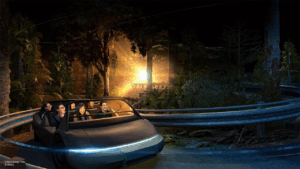Unveiling the Mystery of Elden Ring Nightreign
Despite being a spin-off, Elden Ring Nightreign offers a rich tapestry of lore and narrative depth that will captivate dedicated fans and lore enthusiasts alike. Much like the towering Erdtree that dominates the landscape of the original game, Nightreign represents a branch—a different timeline rooted in the same world of The Lands Between. This installment introduces fresh characters, unique ideas, and a story that, while separate from the main storyline, expands the universe in intriguing ways. When we delve into the ending of Nightreign, it becomes clear just how interconnected and layered this alternate reality truly is.
Is Nightreign Part of the Official Lore?
Nightreign does not follow the canonical storyline of Elden Ring. Instead, it explores a divergent path—an alternate timeline where events took a darker and more catastrophic turn. It’s best viewed as a “what if” scenario rather than a direct part of the main narrative. To fully appreciate the story of Nightreign, players need to engage with its expeditions, fight against Nightlords, and uncover bits of lore scattered throughout the game. This process reveals how Nightreign fits into—or stands apart from—the broader mythos of The Lands Between.
The Nightreign Ending Explained
The game’s opening cutscene sets the tone: in this universe, the Tarnished never arrive. After Marika shatters the Elden Ring, chaos erupts among the gods in what is known as The Shattering. Over thousands of years, no ruler claims the throne, and an ominous figure known as the Nightlord emerges. This entity is a destructive force, a walking disaster that brings relentless rain and decay wherever it goes, slowly dissolving the world into nothingness.
FromSoftware’s storytelling pushes the bleakness even further. Here, the Elden Throne is an empty seat amidst ruins—an image of a world fading into oblivion. Despite this despair, a dedicated group called the Nightfarers sets out to confront the Nightlord, aiming to halt the catastrophe at its source. These brave explorers venture into the remnants of Limgrave, battling familiar monsters and bosses from both Elden Ring and the Dark Souls series. The game hints at mysterious tears in reality—possibly caused by universe collapse—linking these converging worlds.
The Final Battle and Its Impact
The climax involves defeating the formidable boss, Heolstor, a husk of a man wielding what resembles the Moonlight Greatsword from Dark Souls. This fight is widely regarded as one of FromSoftware’s most spectacular boss encounters. Defeating Heolstor grants the player the Primordial Nightlord’s Rune, a dark, inky relic reminiscent of the Great Runes in Elden Ring.
Typically, after slaying a Nightlord, players return to the Roundtable Hold, where allies gather. However, in this ending, the Hold is abandoned, with a petrified corpse inside. Placing the rune before the corpse causes the Nightfarer to dissolve into streaks of light that ascend skyward. The final scene shows the Lands Between—Erdtree and all—bathed in golden leaves, with a mysterious wooden figure rising from the sea, pausing to face the Erdtree before walking away. This imagery suggests that by defeating Heolstor, players have effectively prevented the Night from ever occurring, cutting off Nightreign’s branch of the story and allowing the original Elden Ring timeline to proceed uninterrupted.
Who Is Heolstor and What Do Alternate Endings Reveal?
Little is known about Heolstor beyond the relic obtained after his defeat. The item hints at a knight slain by a hero, who then awakens as a curse upon the world—a cosmic inevitability, as natural as the setting sun. This interpretation aligns with the alternative endings available through specific choices and quests.
For example, the Wylder can assume the mantle of the Nightlord using a Larval Tear, an item associated with rebirth in Elden Ring. His storyline suggests he sacrifices himself to sustain the Night, protecting his sister, the Duchess, from the same fate. This ending emphasizes themes of sacrifice and the cyclical nature of destruction.
Another variation, the Ironye’s ending, involves prolonging the Night by cutting the petrified corpse’s throat after defeating Heolstor. This act aims to preserve his clan of undead warriors, known as Those Who Live in Death—beings that are hunted in the main game’s timeline. While this choice saves his followers, it dooms the world to eternal darkness.
The Recluse’s ending offers a more hopeful conclusion. After defeating Heolstor, she finds and embraces a Night-touched infant, a child corrupted by hunger and darkness. Her love calms the creature, potentially preventing a new Nightlord from rising, and fostering hope amidst despair.
Other Nightfarers’ stories remain unresolved, likely to be expanded upon in future DLC. Their tales could reveal further insights into the nature of Nightreign and its connection to the broader Elden Ring universe, perhaps offering new endings or lore to discover.











